

Research on Diversity in Youth Literature. Research on Diversity in Youth Literature (RDYL) is a peer-reviewed, online, open-access journal hosted by St.
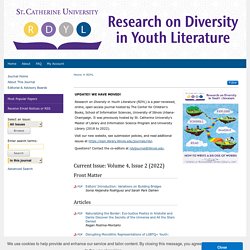
Catherine University’s Master of Library and Information Science Program and University Library. RDYL is published twice a year; June issues are themed and December issues are unthemed. We are pleased to announce that RDYL 3.1, themed “Minstrelsy and Racist Appropriation in Youth Literature and Culture,” will be guest edited by Dr. Brigitte Fielder (University of Wisconsin-Madison) and Dr. Katrina Phillips (Macalester College). Read and download the full CFP for RDYL 3.1 here. A Diversity & Cultural Literacy Toolkit. The following is a list of recommended resources, including articles, videos, and other content, used in our various in-person and virtual training sessions and workshops on diversity and cultural literacy for librarians.
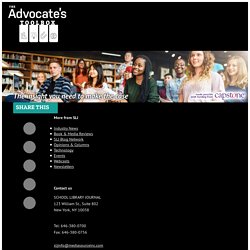
This list is by no means comprehensive; it represents a starting place for further exploration, reflection, and discussion. And while some of the resources are geared specifically to folks selecting or evaluating material for children and teens, the vast majority of the content is applicable to librarians or educators working with students or patrons of any age—from birth to senior citizens. This list was originally compiled as a supplemental resource for workshop or course participants, but it can also serve as the first step in self-directed learning around issues of cultural competence. We invite our community of readers to add their own go-to resources in the comments section. Image from Lee & Low’s Diversity in Publishing 2015 survey results. Dr. Accuracy or Bias? 160309 glbtrt open to all toolkit online. Latinx Literature Gives Students A Voice.
The Diversity Gap in Children’s Book Publishing, 2017. Last month, the Cooperative Children’s Book Center (CCBC) released its statistics on the number of children’s books by and about people of color published in 2016.
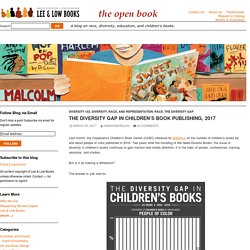
Two years after the founding of We Need Diverse Books, the issue of diversity in children’s books continues to gain traction and media attention; it is the topic of panels, conferences, training sessions, and studies. But is it all making a difference? The answer is yes and no: Holy heck, what an increase! The number of diverse books being published each year stayed stagnant for more than two decades, but in 2014 it began increasing substantially. But wait… While the number of diverse books has increased substantially, the number of books written by people of color has not kept pace.
KT Horning delves into the data to look specifically at the consistent lack of representation for Black writers: We can see that there are a whole lot of books being written about African Americans these days by people who are not African American. Straight Talk on Race: Challenging the Stereotypes in Kids’ Books. Q & A with Ebony Elizabeth Thomas: Why children need more diverse books. Oxford AASC: Home. National Hispanic Heritage Month Book List. 2015 Américas Award for Children’s & YA Literature. In the spirit of “better late than never,” we’re going to take some time this week to share with you the details about this year’s most exemplary Latin@, Latin American, and Caribbean books — all recognized by three awards whose criteria we admire.
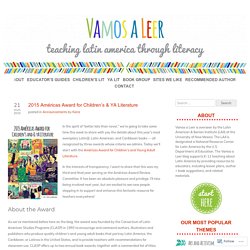
Today we’ll start with the Américas Award for Children’s and Young Adult Literature. In the interests of transparency, I want to share that this was my third and final year serving on the Américas Award Review Committee. It has been an absolute pleasure and privilege. I’ll miss being involved next year, but am excited to see new people stepping in to support and enhance this fantastic resource for teachers everywhere! By linking the Americas, the intent is to reach beyond geographic borders, as well as multicultural-international boundaries, focusing instead upon cultural heritages within the hemisphere. Winners Silver People: Voices from the Panama Canal by Margarita Engle (Houghton Mifflin Harcourt) Honorable Mentions Strike!
Commended Titles. Américas Award @ CLASP, Consortium of Latin American Studies Programs. OverviewCLASP founded the Américas Award in 1993 to encourage and commend authors, illustrators and publishers who produce quality children’s and young adult books that portray Latin America, the Caribbean, or Latinos in the United States, and to provide teachers with recommendations for classroom use.

CLASP offers up to two annual book awards, together with a commended list of titles. To learn more, see our information concerning: Américas Award Ceremony & Teacher Workshop Join us in Washington, D.C. during Hispanic Heritage month to celebrate the 2017 Américas Award winners, honor books and commended titles at this year’s award ceremony and teacher workshop. Come out and meet award-winning authors and illustrators and learn how to incorporate the books into your classroom or library. THURSDAY, SEPTEMBER 21 Américas Award Annual K-12 Educator WorkshopDiverse Roots of Migration in Latin America & the Caribbean American University 4801 Massachusetts Ave. 100 Must Read Diversity Picture Books. Doing a YA Collection Diversity Audit: Understanding Your Local Community (Part 1)
Tomorrow as part of the Library Journal/School Library Journal training on diversity Diversity and Cultural Competency Training: Collections & RA (which you should do), I will be doing a presentation on doing a diversity audit.
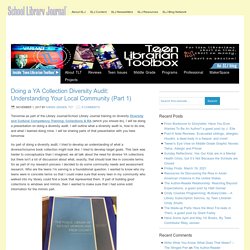
I will outline what a diversity audit is, how to do one, and what I learned doing mine. I will be sharing parts of that presentation with you here tomorrow. As part of doing a diversity audit, I tried to develop an understanding of what a diverse/inclusive book collection might look like: I tried to develop target goals. This task was harder to conceptualize than I imagined; we all talk about the need for diverse YA collections but there isn’t a lot of discussion about what, exactly, that should look like in concrete terms. So as part of my research process I decided to do some community needs and assessment research. Top 120+ Recommended African-American Children’s Books. Mirrors-Windows-and-Sliding-Glass-Doors. Incombustible Ideas: The Subtle Bigotry of Book Banning by Jennifer LaGarde and Travis Crowder.
Books are powerful.

They have the unique ability to transform, inspire, and educate, all while wrapping us in the singularly connective tissue of story. The ideas in books also have the potential to challenge the status quo, make us think differently, and encourage change in our world: a power which some find frightening. Why You Need to Diversify Your Diverse Books. The other day, as I scrolled through my Twitter feed, I noticed that a lot of schools kicked off Black History Month with teachers, special guests, and even superintendents reading Black-themed books to groups of children.
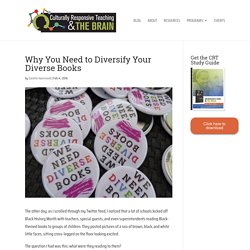
They posted pictures of a sea of brown, black, and white little faces, sitting cross-legged on the floor looking excited. The question I had was this: what were they reading to them? There’s an ongoing critique that too many of the culturally diverse books, especially those about African Americans, brought into our elementary and middle school classrooms are only about buses, boycotts, and basketball. The themes for books featuring African American are most often limited. They are either about the challenges of “urban living” (aka ghetto life). In reality, Black life is diverse. So as we bring books into the classroom for Black History Month, we have to broaden our criteria for inclusion. Just look at Scholastic’s recent fiasco. Is the theme stereotypical? Canerow. A Diversity & Cultural Literacy Toolkit.